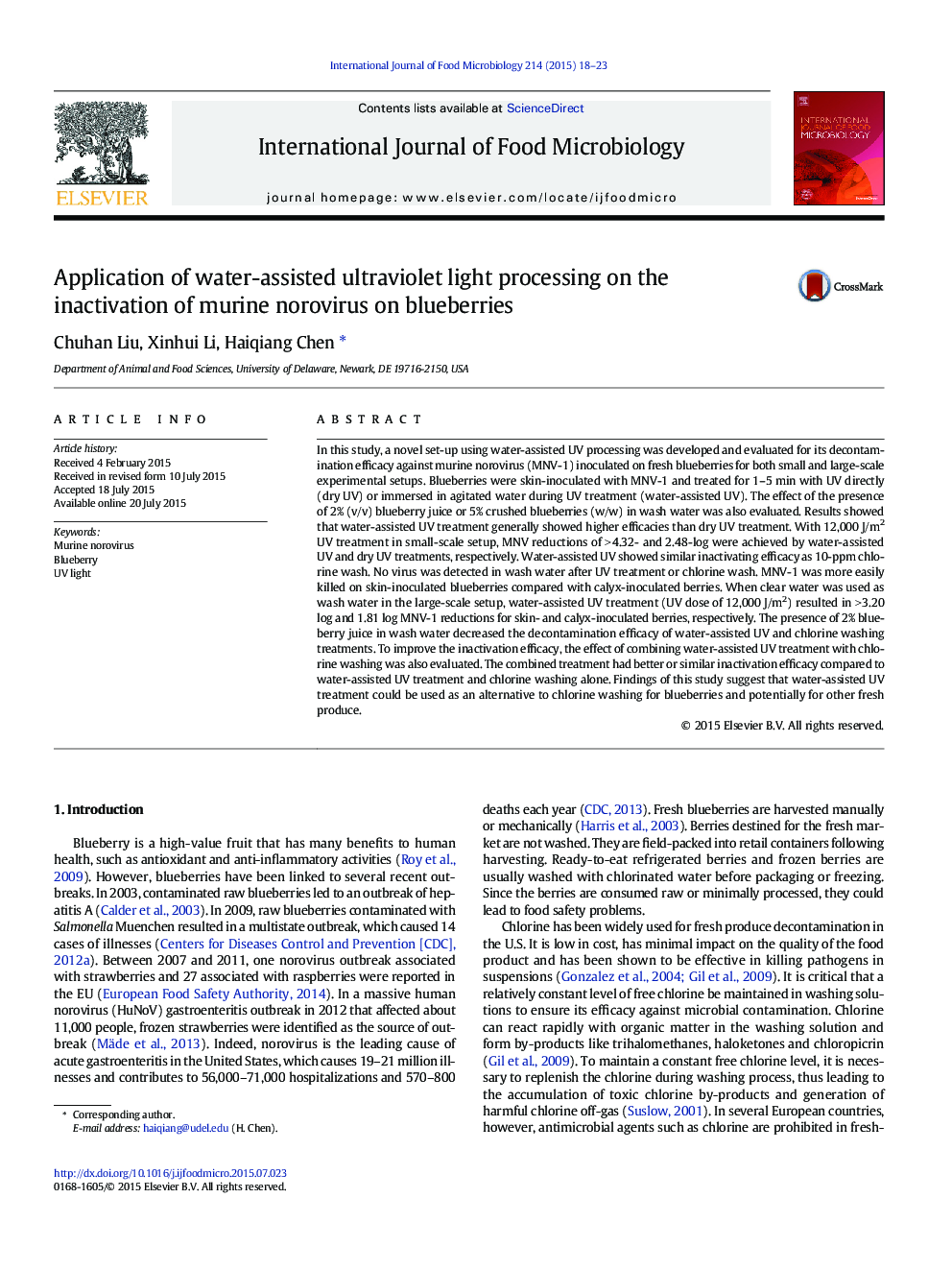| کد مقاله | کد نشریه | سال انتشار | مقاله انگلیسی | نسخه تمام متن |
|---|---|---|---|---|
| 4366456 | 1616569 | 2015 | 6 صفحه PDF | دانلود رایگان |
• A water-assisted UV system for decontamination of blueberries was developed.
• Water-assisted UV treatment showed higher decontamination efficacy than UV treatment alone.
• Water-assisted UV treatment was more effective or as effective as chlorine washing.
• The UV decontamination efficacy was influenced by the inoculation methods.
• Presence of blueberry juice in wash water provided protection for murine norovirus.
In this study, a novel set-up using water-assisted UV processing was developed and evaluated for its decontamination efficacy against murine norovirus (MNV-1) inoculated on fresh blueberries for both small and large-scale experimental setups. Blueberries were skin-inoculated with MNV-1 and treated for 1–5 min with UV directly (dry UV) or immersed in agitated water during UV treatment (water-assisted UV). The effect of the presence of 2% (v/v) blueberry juice or 5% crushed blueberries (w/w) in wash water was also evaluated. Results showed that water-assisted UV treatment generally showed higher efficacies than dry UV treatment. With 12,000 J/m2 UV treatment in small-scale setup, MNV reductions of > 4.32- and 2.48-log were achieved by water-assisted UV and dry UV treatments, respectively. Water-assisted UV showed similar inactivating efficacy as 10-ppm chlorine wash. No virus was detected in wash water after UV treatment or chlorine wash. MNV-1 was more easily killed on skin-inoculated blueberries compared with calyx-inoculated berries. When clear water was used as wash water in the large-scale setup, water-assisted UV treatment (UV dose of 12,000 J/m2) resulted in > 3.20 log and 1.81 log MNV-1 reductions for skin- and calyx-inoculated berries, respectively. The presence of 2% blueberry juice in wash water decreased the decontamination efficacy of water-assisted UV and chlorine washing treatments. To improve the inactivation efficacy, the effect of combining water-assisted UV treatment with chlorine washing was also evaluated. The combined treatment had better or similar inactivation efficacy compared to water-assisted UV treatment and chlorine washing alone. Findings of this study suggest that water-assisted UV treatment could be used as an alternative to chlorine washing for blueberries and potentially for other fresh produce.
Journal: International Journal of Food Microbiology - Volume 214, 2 December 2015, Pages 18–23
